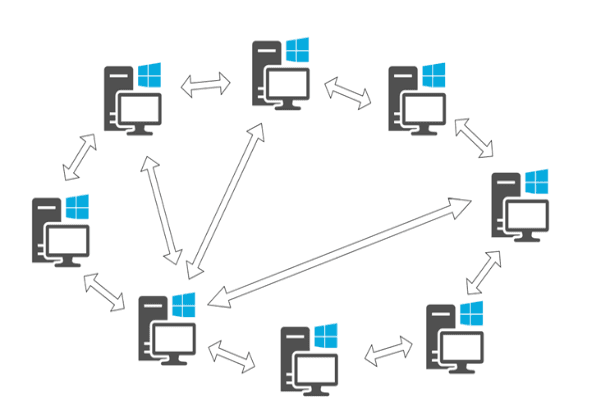It is critical to choose the right networking system for your company’s communication, cybersecurity, and general efficiency while establishing a network infrastructure for the future. For many organisations, peer-to-peer networks are an excellent option. Peer-to-peer (P2P) networks can be used in a variety of ways, and this article explains how to keep your P2P network safe. A peer-to-peer network (P2P) is a method of connecting several computers to a single network. You don’t have to utilise a separate server for file-sharing with this connection.
A “peer” is a computer that can receive and deliver data to and from other computers on the network. Using this, you may collaborate with others to do projects that need joint effort, and you can also help out another person.
How is a peer-to-peer network set up?
Until a peer authorises your access, this programme prevents you from exchanging information. That is why computers require authorization to view files on other computers before they may do so. It is up to each peer to decide whether or not they want to grant access to their files to another. The files of another user must be granted access by the original owner before they may be accessed by another user. User Y has the option to accept or refuse this access, at which point user X will get the password.
You may also utilise a P2P network to:
When it comes to filing sharing, nothing beats peer-to-peer (P2P). In addition to saving you money, this characteristic of P2P networking eliminates the need for a third-party server. P2P networks are fantastic because they offer a safe and fast method of communication. Following a protocol that allows encryption on both peer machines and provides simple communications tools makes this achievable.
The ability to easily share files with your coworkers also helps foster a more productive work environment. Using this application, you may do a wide range of jobs, including some that need considerable testing.
System backup: Another excellent aspect of P2P networking is the ability of the other computers to continue operating even if one machine crashes for whatever reason. Only when all of the peer machines are shut down simultaneously does this networking come to an end. Because of this, the risk of data loss is low and the risk of secure file sharing is high. P2P networking becomes more dependable as a result of this functionality.




